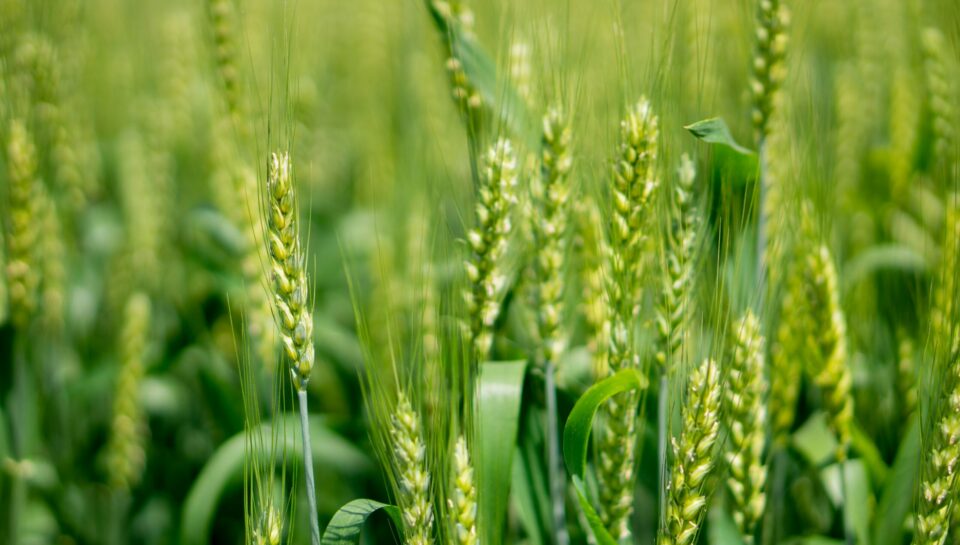Plant Sap Analysis: The Real-Time Diagnostic Tool That’s Changing Crop Management

How many times have you gotten soil test results back and thought, “This doesn’t match what I’m seeing in the field”? Or discovered a nutrient deficiency only after it’s already cost you yield? There’s a better way to monitor crop nutrition that’s becoming the secret weapon of high-performing growers: plant sap analysis.
Think of it as a blood test for your crops – except instead of waiting for symptoms to show up, you can spot problems 2-4 weeks before they become visible. That’s enough time to actually do something about it.
Why Soil Tests Don’t Tell the Whole Story
Here’s the problem with traditional soil testing: it tells you what’s in the soil, not what the plant is actually getting. You might have adequate phosphorus in your soil test, but if soil pH, temperature, or biological activity is limiting uptake, your plants could be starving for P while you’re none the wiser.
Plant sap analysis flips the script. Instead of guessing whether nutrients are plant-available, you’re testing what’s actually moving through the plant’s circulatory system right now. It’s the difference between checking your bank account balance versus checking your actual cash flow.
What Sap Analysis Actually Measures
When you send in a sap sample, you get 23 different data points that show you:
Macronutrients in real-time:
- Nitrate levels (are you converting nitrogen properly?)
- Phosphorus availability (is it really getting to the plant?)
- Potassium mobility (especially critical during reproductive stages)
- Calcium and magnesium balance
Micronutrient status:
- Iron, manganese, zinc, boron levels
- Copper and molybdenum availability
- Critical ratios between nutrients
Plant health indicators:
- Sugar content (brix levels)
- Chlorophyll efficiency markers
- Stress indicators
The key insight: these numbers change throughout the growing season based on weather, growth stage, and management decisions. A single soil test can’t capture that dynamic reality.
Timing Is Everything: When to Sample
Early vegetative stage (V4-V6 in corn): Look for nitrogen conversion efficiency. High nitrate levels in sap indicate the plant isn’t converting N to proteins properly – a red flag for future pest pressure.
Pre-reproductive stage: Monitor phosphorus and potassium mobility. These nutrients need to be moving efficiently before the plant shifts energy to grain filling.
Reproductive stage: Track calcium and boron levels for proper cell wall development and seed set. Micronutrient deficiencies here directly impact final yield.
Grain filling: Monitor sugar levels and nutrient remobilization. This data helps optimize harvest timing and storage quality.
Reading the Results: What the Numbers Really Mean
Nitrate levels:
- Target: As close to zero as possible
- High nitrates = incomplete protein synthesis = insect magnet
- Timing: Can shift within 24-48 hours of foliar application
Phosphorus availability:
- Critical during early growth and grain filling
- Low P shows up in sap before leaf symptoms appear
- Helps explain “mysterious” yield limitations
Potassium mobility:
- Essential for water regulation and disease resistance
- Deficiencies often show up during stress periods
- Earlier indicator than tissue testing
Micronutrient ratios:
- Iron to manganese ratios affect photosynthesis efficiency
- Zinc levels correlate directly with protein synthesis
- Boron critical for calcium mobility and cell wall strength
The Practical Management Advantage
Proactive pest management: High nitrate levels in sap are a predictor of insect pressure 2-3 weeks out. Instead of waiting for aphids to show up, you can adjust nutrition to remove their food source.
Precision foliar timing: Sap analysis shows you exactly when nutrients are most needed. No more guessing whether that expensive foliar application will pay off.
Stress prediction: Nutrient imbalances show up in sap before they impact photosynthesis. You can address deficiencies before they cost you bushels.
Input optimization: See which nutrients are actually being utilized versus just sitting in the soil. Stop overapplying what’s not being used.
Comparing Sap Analysis to Other Testing Methods
Soil testing:
- Shows what’s there, not what’s available
- Static snapshot, doesn’t change with conditions
- Good for baseline fertility planning
Tissue testing:
- Shows cumulative nutrient storage
- Reflects what happened weeks ago
- Good for post-season evaluation
Sap analysis:
- Shows real-time nutrient flow
- Reflects current plant status
- Actionable for immediate decisions
The bottom line: Use all three, but rely on sap analysis for in-season management decisions.
Sample Collection: Getting Accurate Results
Critical timing factors:
- Sample between 10 AM and 2 PM for consistent results
- Avoid sampling within 48 hours of rainfall or irrigation
- Don’t sample within a week of foliar applications
Proper technique:
- Use the newest fully expanded leaves
- Get samples to the lab within 24 hours
- Keep samples cool during transport
- Include GPS coordinates and growth stage information
Sample size:
- Minimum 20 plants per field zone
- Mix samples from different areas of the same management zone
- Avoid plants showing obvious stress or damage
ROI: When Sap Analysis Pays Off
Scenario 1: Early nitrogen management Sap analysis shows high nitrate levels at V6 stage. Foliar application of sulfur and magnesium converts nitrates to proteins, preventing aphid pressure that would have required two insecticide applications. Savings: $35/acre in pesticide costs plus yield protection.
Scenario 2: Reproductive stage nutrition Sap testing reveals low boron availability during pollination. Targeted foliar boron application improves kernel set by 12%. On 200 bu/acre corn at $4.50/bu, that’s $108/acre additional revenue.
Scenario 3: Stress mitigation Pre-stress sap analysis identifies potassium deficiency before heat stress period. Potassium application improves water use efficiency, maintaining yield during drought. Value: priceless in a challenging year.
Making Sap Analysis Work for Your Operation
Start simple:
- Begin with problem fields or high-value crops
- Focus on 3-4 key nutrients initially
- Build sampling protocols that fit your operation
Build the system:
- Establish baseline values for your area
- Track trends across multiple years
- Correlate sap data with yield results
Integration strategy:
- Use sap analysis to fine-tune your foliar program
- Combine with drone imagery for field mapping
- Share results with your agronomist for better recommendations
The Future of In-Season Management
Progressive growers are using sap analysis as part of a precision agriculture system that includes soil testing, tissue analysis, drone imagery, and yield mapping. The goal isn’t just higher yields – it’s consistent, profitable yields with reduced input costs.
When you can predict nutrient deficiencies weeks before they impact yield, adjust pest management based on plant physiology rather than calendar dates, and optimize foliar applications based on real-time plant needs, you’re not just farming – you’re managing a high-performance biological system.
The question isn’t whether you can afford to add sap analysis to your management toolkit. The question is whether you can afford to keep making nutrition decisions in the dark when your competitors are getting real-time plant health data.
Ready to see what your crops are really telling you? Start with one field, establish your baseline, and prepare to manage nutrition like never before.
